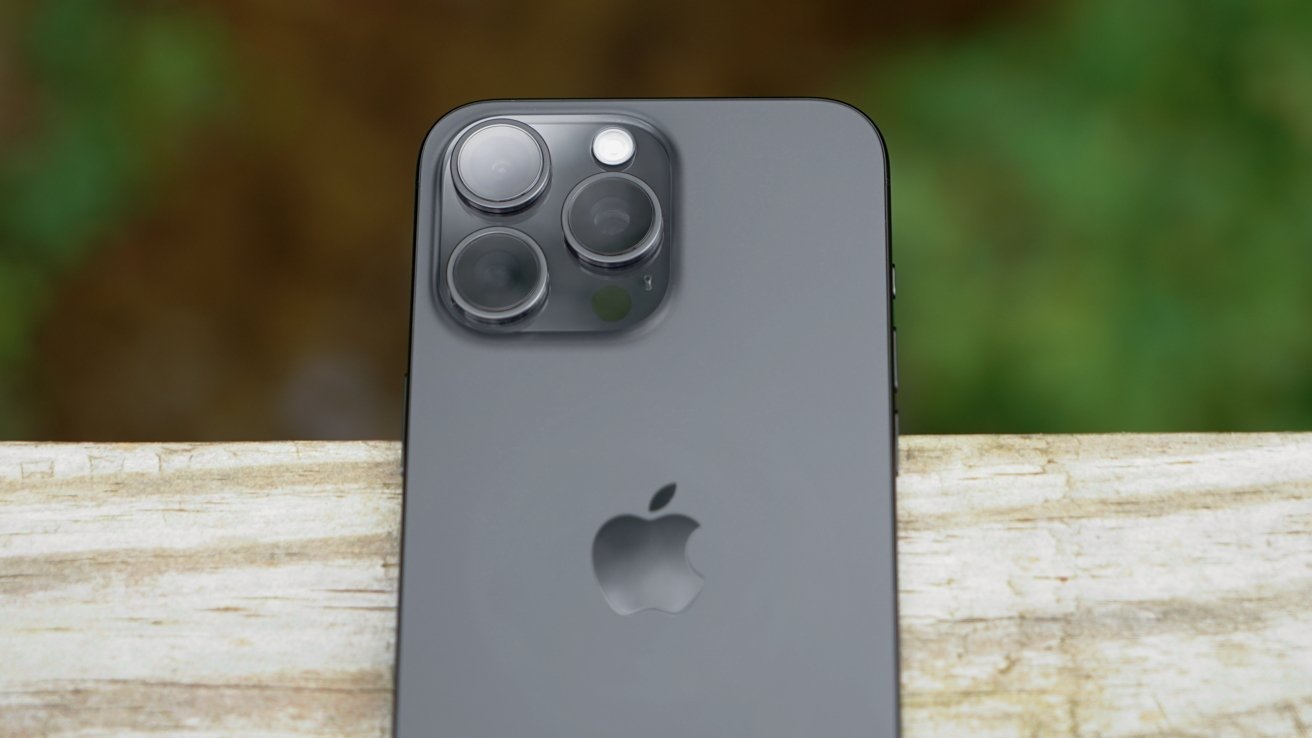
Cameras of the iPhone 15 Pro Max

The upcoming Danny Boyle horror sequel “28 Years Later” was shot on the iPhone 15 Pro Max, marking another movie that took advantage of Apple’s product lines.
Principal filming of “28 Years Later,” a continuation of the “28 Days Later” franchise, took place over the summer. But while filming was largely guarded with secrecy, one about how it was filmed has leaked out.
Multiple people familiar with the production confirmed to Wired that the iPhone 15 Pro Max was used by director Boyle and cinematographer Anthony Dod Mantle.
During filming, staff were prevented from revealing the information via NDAs. However, a shot from July gave a hint that the filming was not using normal cameras.
The shot showed star Jodie Cromer near a movie camera that, at first glance, looked like a typical big camera rig. Further examination by the publication revealed that it was a cinema camera lens but attached to a protective case capable of holding an iPhone.
The case is thought to be an aluminum cage, designed not only to protect camera hardware but also to easily attach adapters. Some of these adapters could be used to make large lenses interface with the cameras used on smartphones, expanding the potential shot choices of the director.
Small tech, big screen
Shooting on a smartphone, like an iPhone, is not entirely new for Boyle. Filming “28 Days Later” included time limitations that didn’t work with traditional camera gear, forcing Boyle to think differently.
For that film, he used the Canon XL-1, a prosumer camcorder that recorded to MiniDV tapes. However, the limitations of video technology in 2002 led to problems such as an inability to properly upscale the lower-resolution 480p footage.
With the capability of recording at 4K, the iPhone 15 Pro Max certainly won’t have that issue.
Apple’s release of the iPhone 15 Pro introduced many filmmaker-friendly features, including being able to record ProRes 4K video at 60fps to an external USB-C drive. Apple also included the ability to record in a flat profile, which helps with color correction in editing, and ACES support, among other updates.
The technical capabilities of the iPhone have been used more in productions, such as early effort”Unsane” from 2018. Broadcasters are also leaning on the hardware for outside broadcasts, including the BBC covering the UK election and various productions during the coronavirus pandemic.
“28 Years Later” is anticipated to be released during the summer of 2025.




